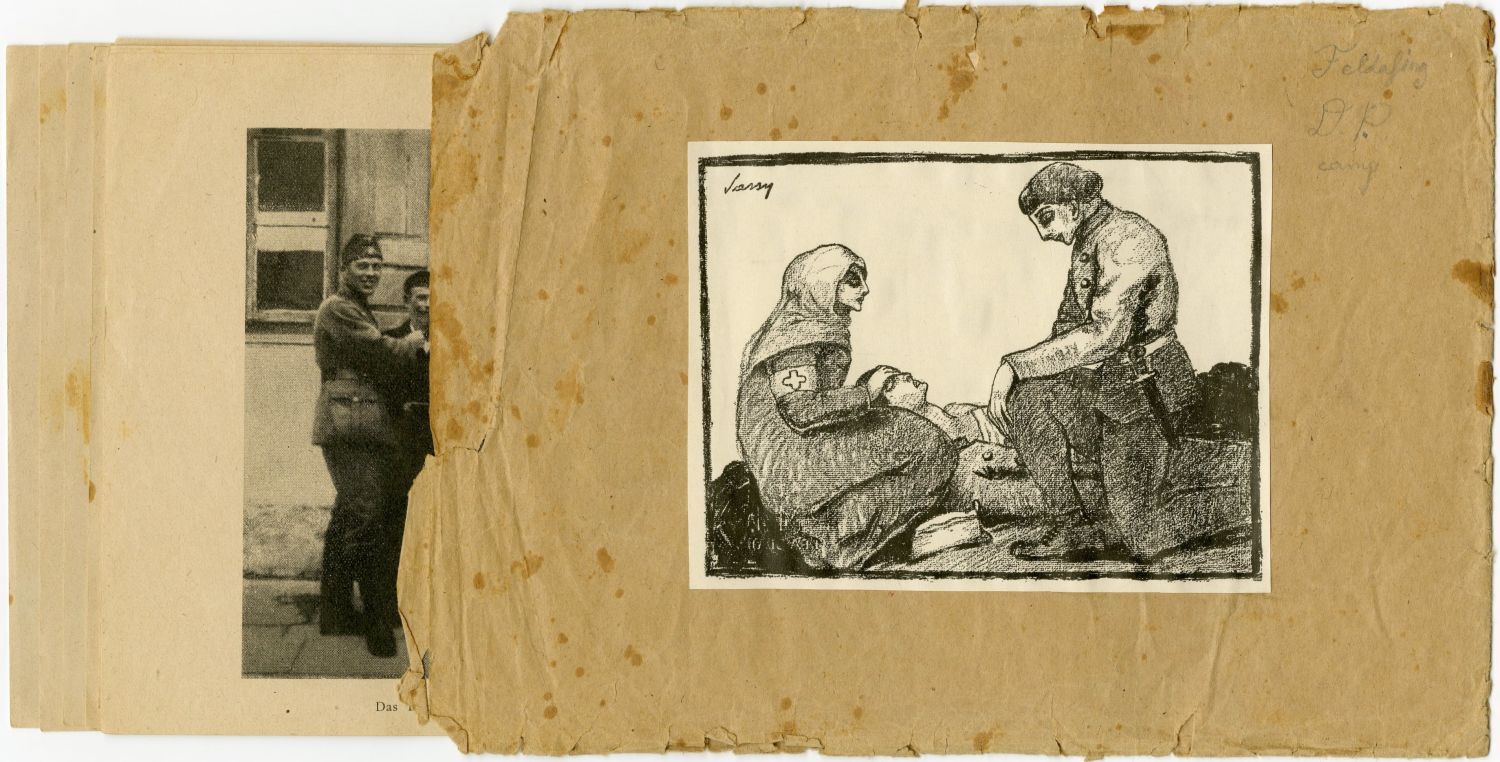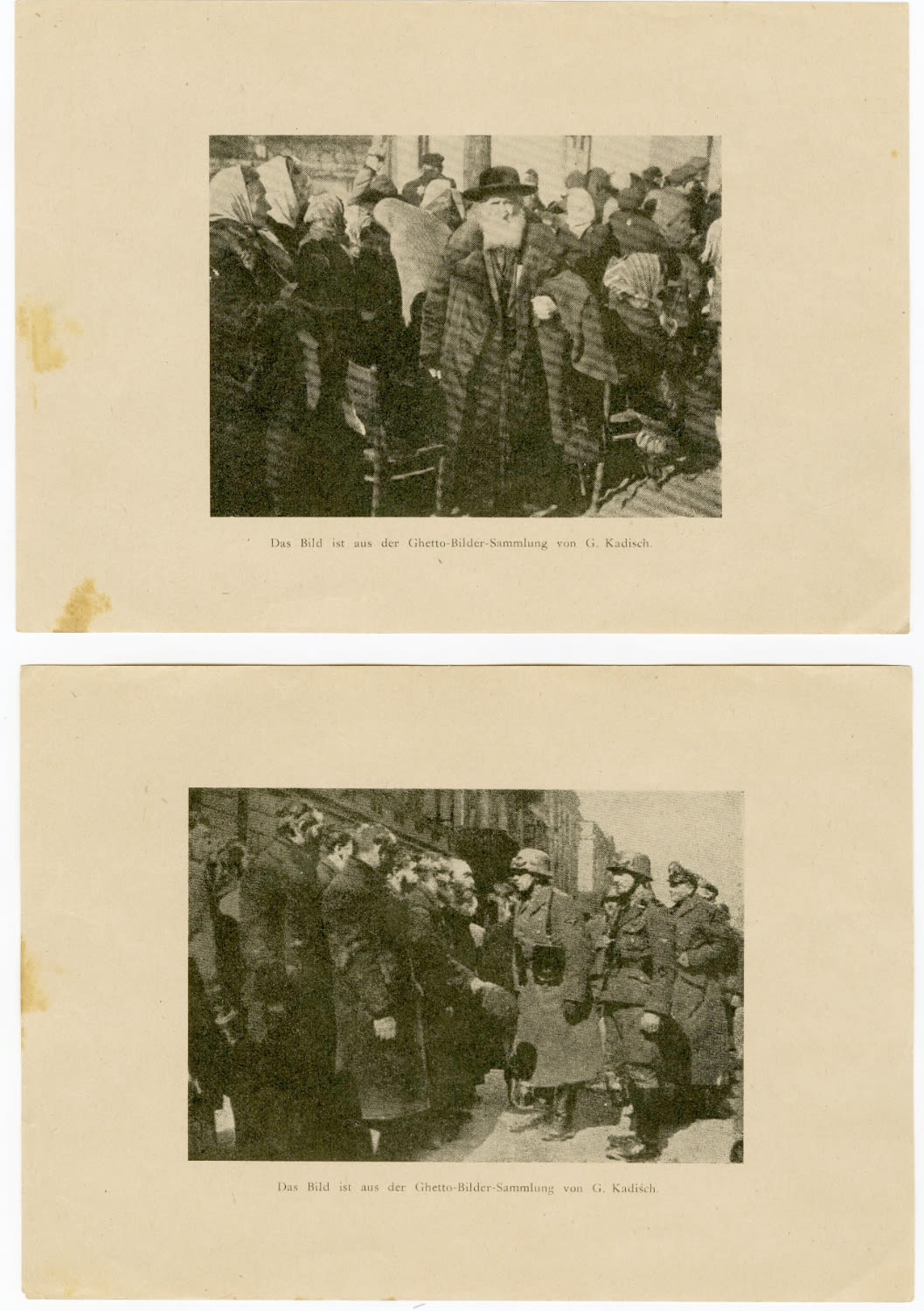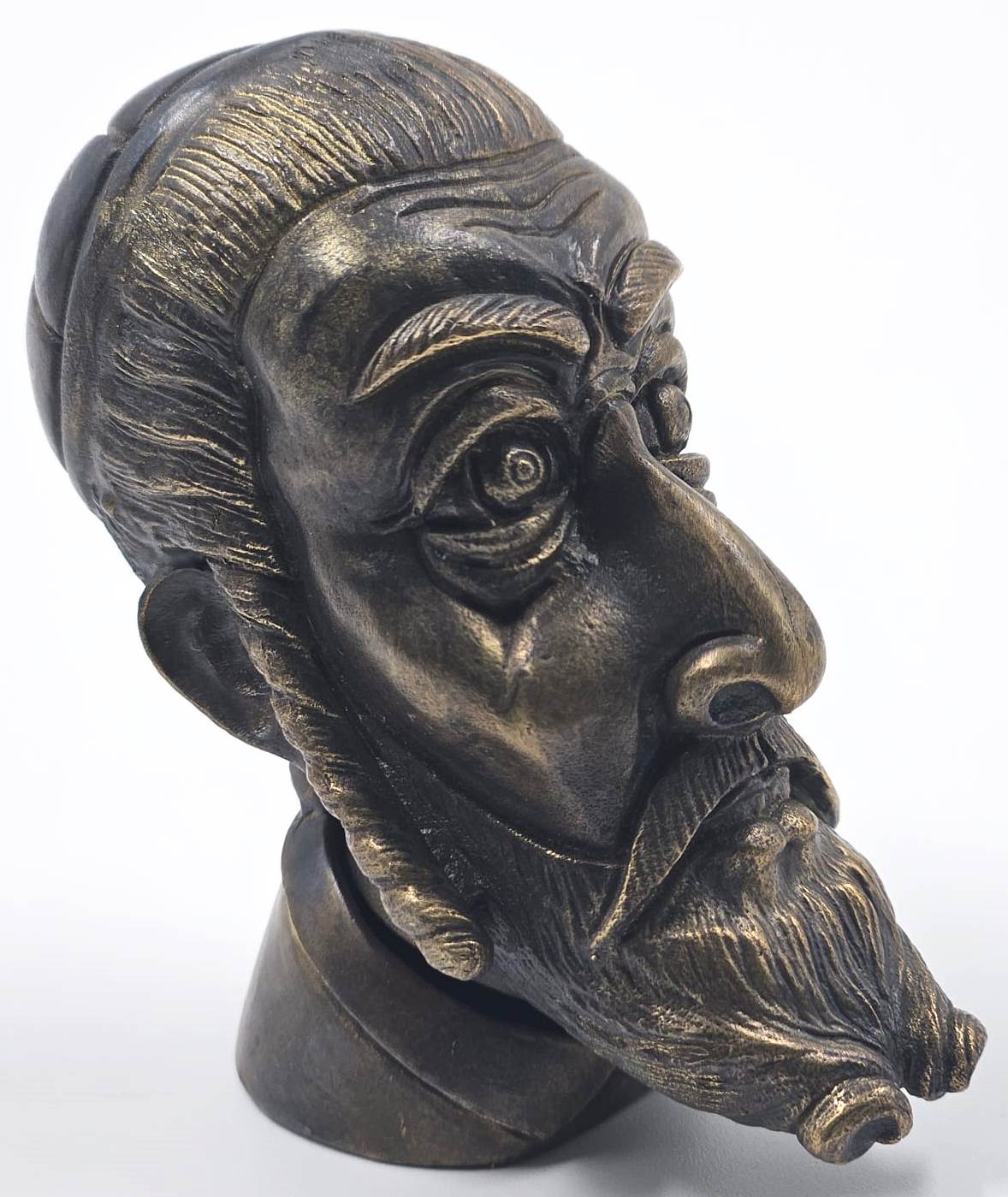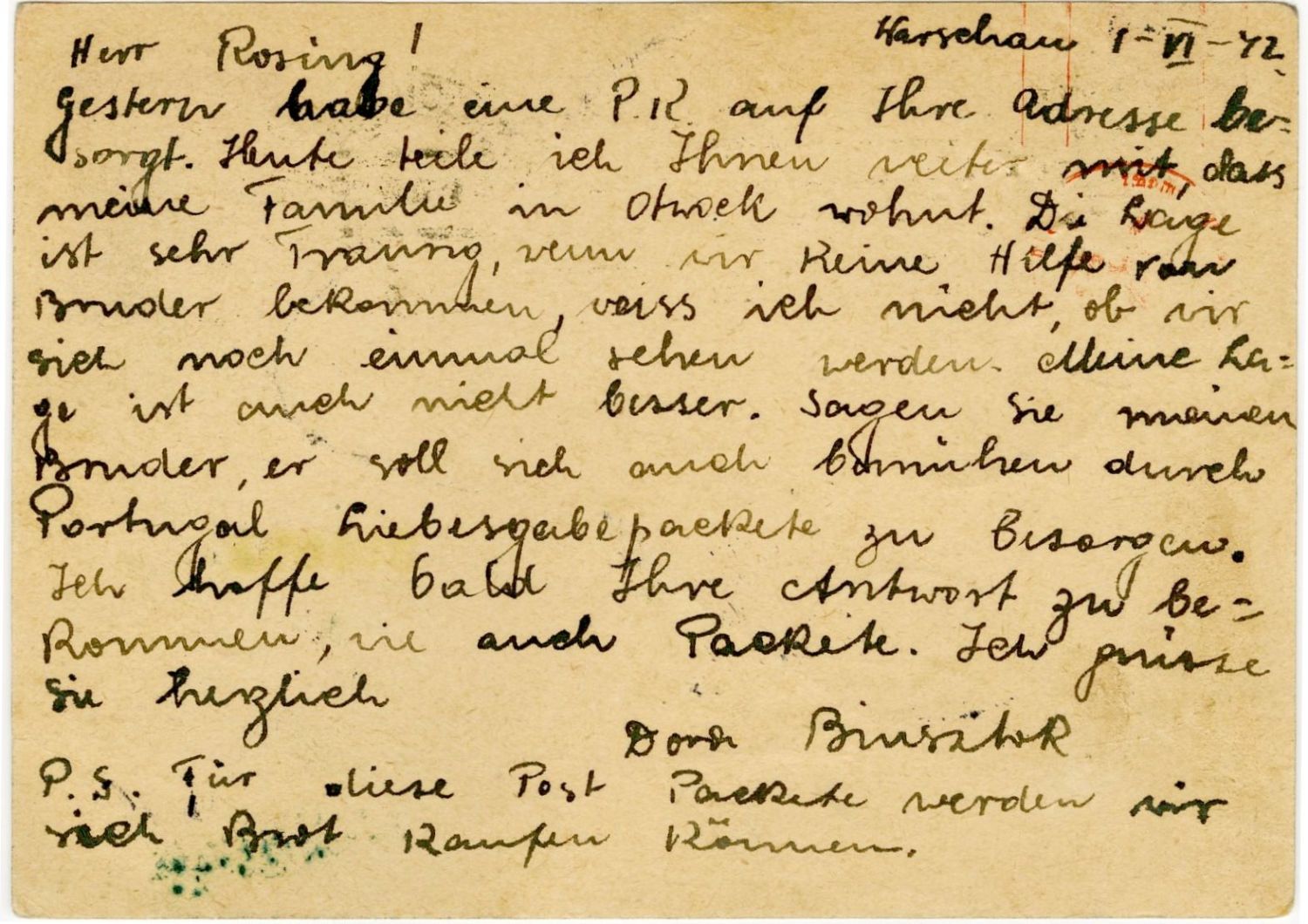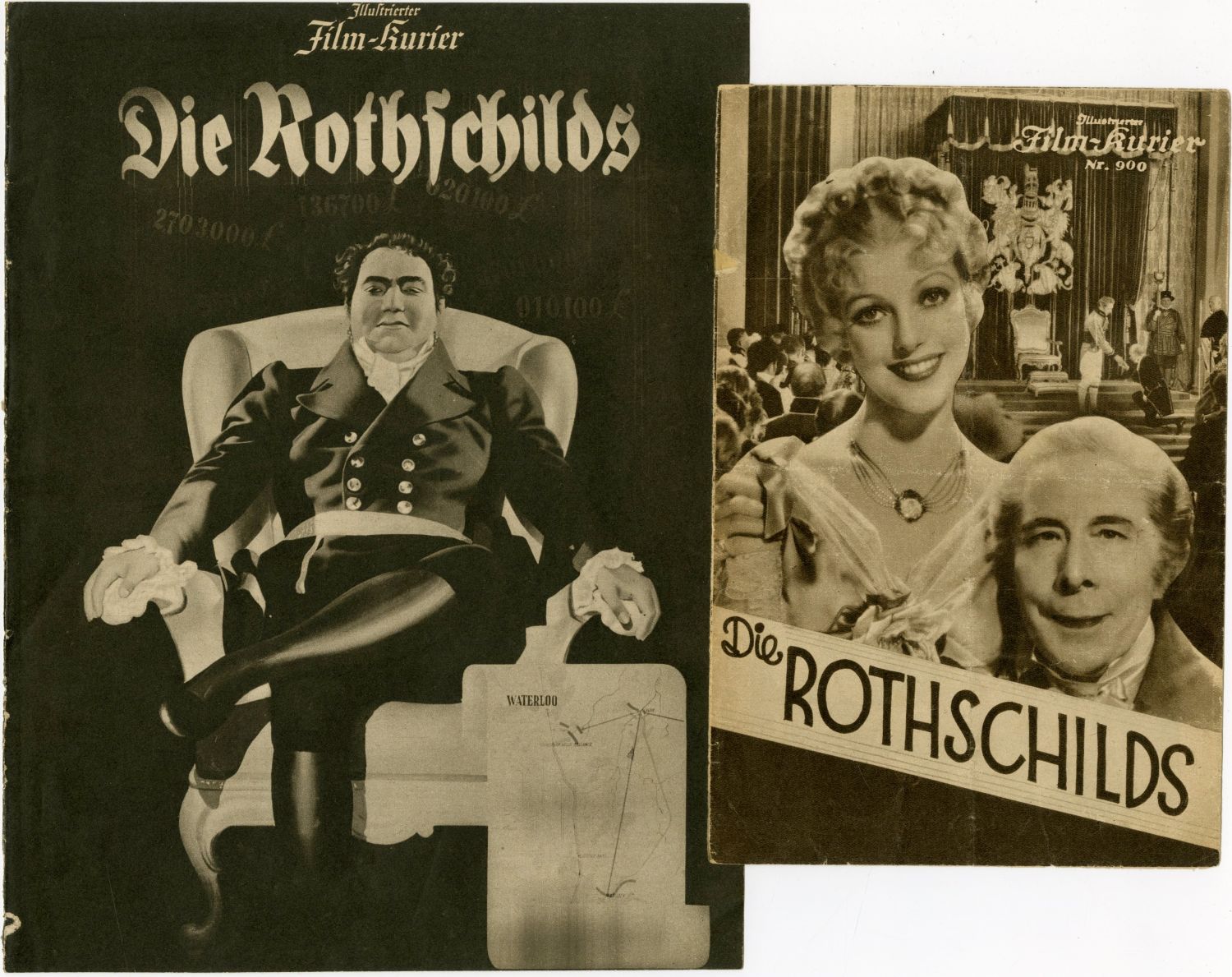17 printed photographs of harsh scenes from the ghetto and death camps from the collection of the well-known underground photographer Zvi Hirsch Kadoshin (known as George Kadish) - data in an original envelope from the exhibition of photographs he presented in 1946 in the Peldafing D.P. Camp. Each photograph is described in German in print: "Das Bild ist aus der Ghetto - Bilder Sammlung von G. Kadisch - "The photo is from the ghetto images collection of G. Kadisch".
The collection is divided into two divisions: one is photographs of Nazi abuse of Jews in the ghetto, and the other is photographs of Jewish bodies murdered by the Nazis in the ghettos and extermination camps. In the photographs: German soldiers tearing off the beards of Jews, young people who were forced to ride on top of adults in the street for the purpose of humiliation, Jews carrying their shackles and running away, public humiliation of a Jew, expulsion of Jews from the Warsaw Ghetto, a group of Jews captured by the Nazis in the midst of the Warsaw Ghetto Uprising, bodies of Murdered by the A.K. polish in Nowytrark (1945), a pile of corpses in the Dachau camp, prisoners carrying a corpse from the crematorium in Dachau, and more.
George Kadish (Zvi Kadoshin 1915-1997) a resident of the city of Kovna, was a photography enthusiast who managed to secretly and privately take about 6000 photographs in the Kovna ghetto. His work as an x-ray technician in a German military hospital gave him access to photographic materials and development media. He developed various techniques for hiding the camera and secretly photographing through clothing. In his photographs can be seen the Jews who were concentrated between the ghetto fences, Jews with their shakers, people in forced labor, acts of murder, children and old women, and more. In some of them, the subjects are seen looking straight at the camera. Kadish also photographed the deportation of the Jews to the labor camps in Riga and Estonia and to the concentration camps. He hid his photographs and went into hiding himself before the liquidation of the ghetto. Thanks to this he and some of his photographs survived. After the surrender of Nazi Germany in May 1945, Lithuania traveled to the American occupation zone in Germany and arrived at the Landsberg displaced persons camp, where he stayed until 1946. Landsberg continued to document life in the camp, and there he also presented his collection of photographs for the first time to the camp survivors. He also presented his photographs at the first Congress of the survivors held after the war in Munich, Germany, January 1946, and at the DP camp in Feldaffing. Later he immigrated to New York and worked as a mechanical engineer and inventor. In 1982, he donated a large part of his collection to the Beit Hatfusot archives, including about 2,000 negatives he took in the Kovna ghetto between the years (1942-1944) and about 1,000 photographs from the displaced persons camp in Landsberg (1945-1946).
Photos from the exhibition of Kadushin's photographs that took place in the Peldafing IDP camp see here , And see also "Photo Flashes - Photography during the Holocaust, Yad Vashem Publishing 2018, page 154 the chapter on "Zvi Kadushin an underground photographer in the Kovna ghetto".
Original envelope with a sticker on it depicting a person killed in battle next to the Red Army men and a pencil inscription Feldafing DP camp.
Photographs of the same size: 21x15 cm. Except for two: 15x10 cm. Envelope: 24x16 cm. The photographs are in very good condition. The envelope has tears and stains.



